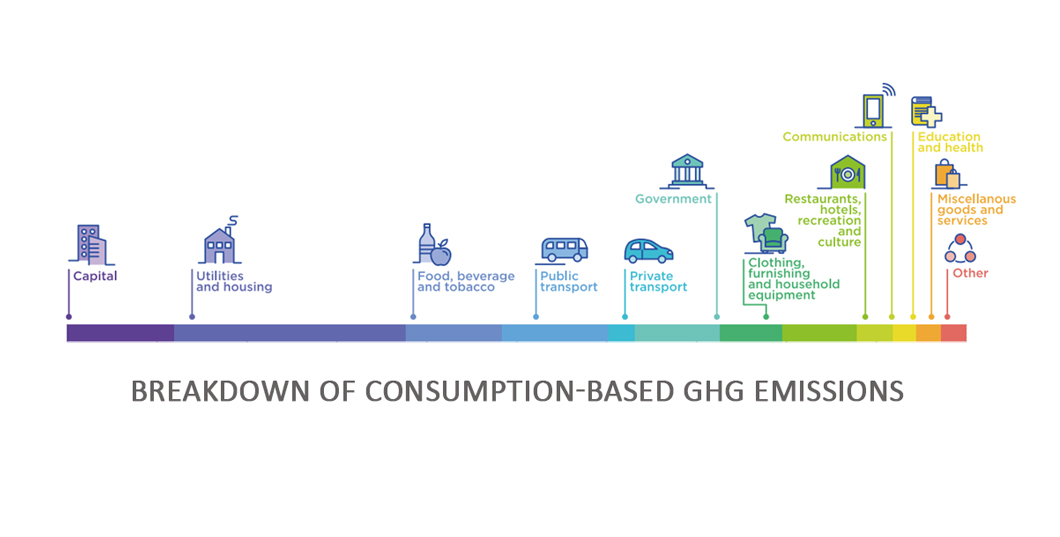Cities cover less than 3% of the Earth’s surface, but over half the people in the world live in them . Although they are a motor of economic growth, they are also one of the main polluters of the planet, consuming over two-thirds of the energy and pumping out more than 70% of global greenhouse gases.
Such data clearly demonstrates that the most populous urban centers on Earth are largely to blame for the climate crisis, but they also have the solution to end it. It has never been more urgent that cities set themselves a vital deadline by which they will achieve carbon neutrality, where their net greenhouse gas emissions fall to zero, thus making them local leaders in the mitigation of, and adaptation to, climate change.
Many governments are aware that, to fulfil their , they inevitably need the commitment of local authorities in gradually eliminating fossil fuel use. How can we pollute less in the city? With the efforts of all actors – public sector, citizens and private sector – this is possible. Here are some measures cities could use to achieve carbon neutrality:
Polluter pays
Cities can develop economic policies and environmental fiscal measures that reward non-polluting activities and severely penalize those that fail to respect the environment, on both the production and consumption sides. Among the fiscal measures to reduce the pollution of cities, we find emissions charges that enable taxes to be reduced in other sectors; offsetting measures; carbon price duties, or; subsidies for financing projects that tackle climate change.
A good example is Canada, which has introduced a tax on the consumption of fossil fuels such as gas, diesel and coal, and rewards citizens who use them less with tax rebates.
Promoting efficient and smart homes
Another way to approach carbon neutrality in cities is controlling construction methods. Choosing less-polluting options, both in technologies and materials, can reduce carbon emissions between 20 and 25%.
Cities can also toughen legislation covering new housing construction standards, promoting buildings that obtain demanding environmental certification for management and energy services: water heating systems driven by solar power, more efficient air conditioning, heating that uses water instead of oil, smart thermostats, lighting sensors, etc.
At the economic level, local governments can facilitate financing tools permitting the construction of more sustainable buildings and the renovation of old buildings to meet new energy efficiency standards. Improving wall, window and roof insulation materials can cut energy costs by up to 40%.
New York, for instance, now requires owners of big buildings to undertake periodic energy audits and replace equipment when it cannot comply with the latest standards.

“In large European cities, GHG emissions from public services, capital assets, transport, food and government services are the most significant”
Promoting renewable energies in all sectors

The fight against global warming depends mainly on our ability to generalize renewable energies. Cities must favor their use through fiscal and legislative tools: providing clean electricity producers with a fixed price for the energy they generate, promoting fiscal credits in the form of kWh generated, creating green financial instruments that favor their deployment both at private and corporate level…
Paradigm change in mobility
Cities need a mobility plan ever more committed to reducing pollution. Measures must be taken to reduce traffic in the centers, promote public, sustainable transport in business districts more populated by workers, and facilitate movement through fast road lanes and upgrading metro stations.
Additionally, support for increasingly popular modes such as electric vehicles, shared mobility and the 5G connectivity that will allow communication between vehicles, could be crucial in achieving the objective of carbon neutrality in cities.
Less waste and more circular economy
Cities can begin to manage their waste by making emissions reduction their No. 1 objective. The circular economy should be used as the pillar underwriting waste management through its three main principles: reduce, reuse and recycle. Waste-to-energy plants, which convert trash into energy, reduce dumping and landfill, and make use of garbage by converting it into renewable energy.
Widening the use of compost techniques, and anaerobic or other similar treatment systems, also helps to eliminate garbage without generating unsustainable environmental impacts.
Cities have the potential to meet 90 to 100% of the target for reducing polluting emissions by 2030 and introduce a large proportion of the infrastructure needed to achieve carbon neutrality by 2050. With the collaboration of public bodies, private investment and the will of citizens, we can succeed.
Sources: McKinsey, Bloomberg, ONU Habitat, Ecoavant
Graphic: assembled from the C40 report